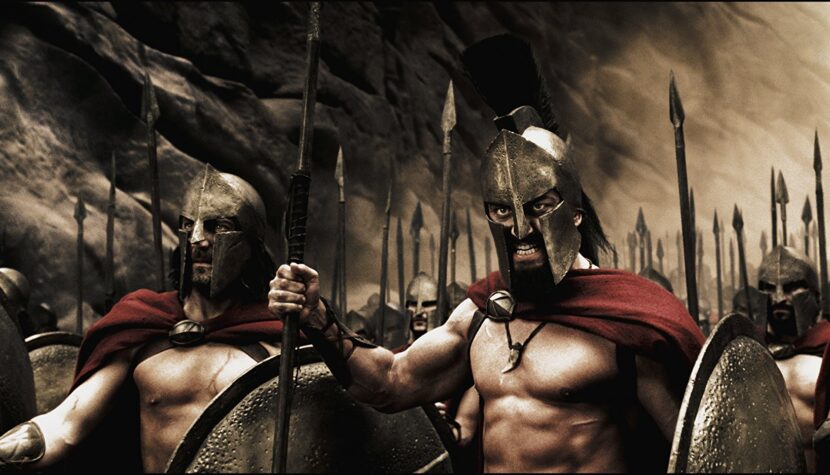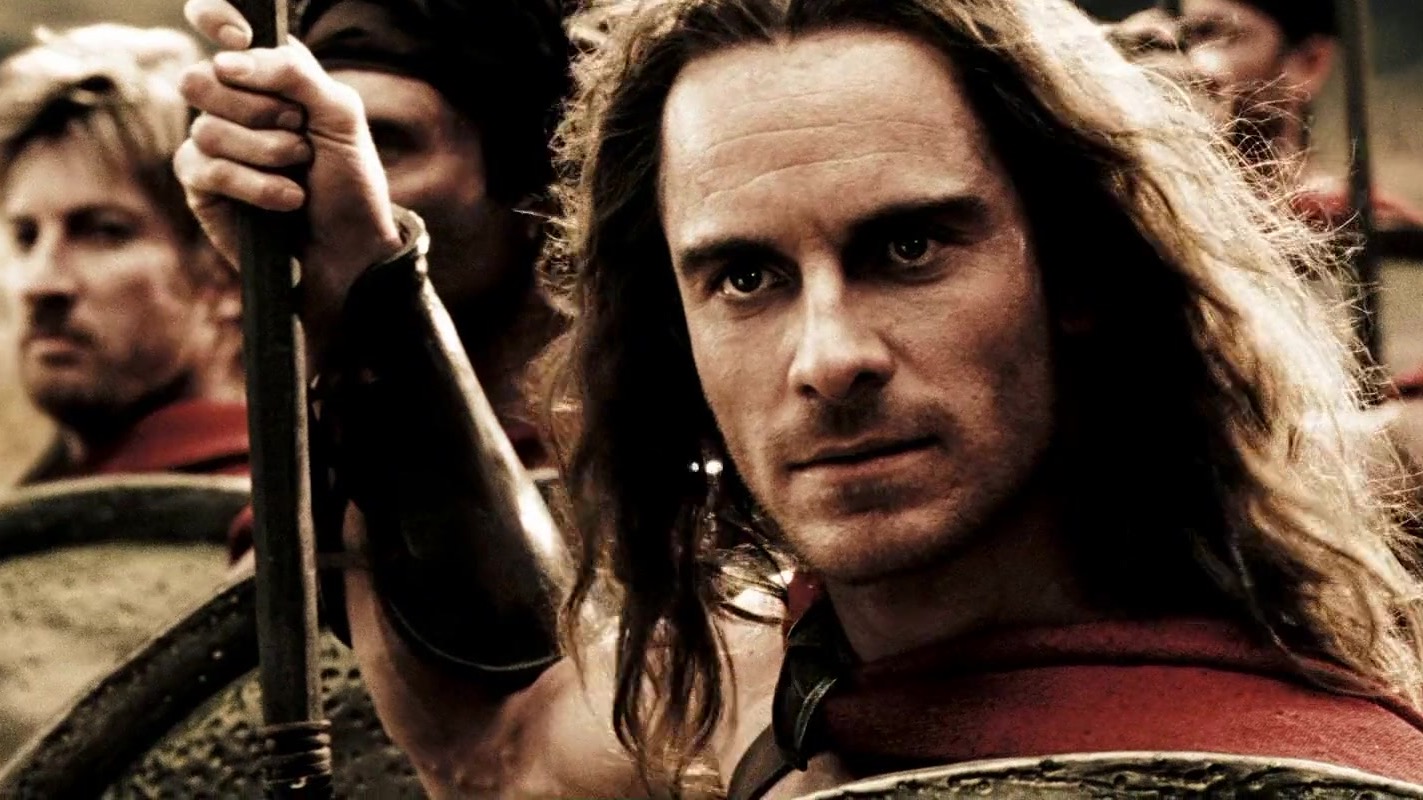300. Jaw on the Floor [REVIEW]

One must not even be a fan of cinema to notice that entertainment cinema suffers from a slight infertility, which creators try to mask with clones – I don’t even feel like elaborating on this topic in detail, as it is an easily noticeable ailment in cinema.
And this is the place where one “but” appears…
Because 20 years ago a certain remedy has been discovered, which worked excellently. And that remedy is Frank Miller’s comics. Thanks to the ingenuity of this gentleman, Christopher Nolan refreshed the somewhat stale Batman series, making the latest installment of his adventures not only easy to digest but downright delicious. Also, Robert Rodriguez, a director who is very uneven when creating his own films but, in collaboration with Quentin, produces (yes, I dare to use that word) cult films, created perhaps his best work and at the same time one of the best films of 2000s – Sin City, based on Miller’s comic series, which served not only as inspiration but even as ready-made scripts. A fascinating, engaging, innovative film when it comes to adapting comics and very original.
And, as the reader probably suspects, the 2006’s film by Zack Snyder follows the same path in my opinion. It belongs to a genre that can be called historical, warlike, costume, or sandal (a little bit of everything new). Something I expected, a very pleasant proof that cinema has not yet exhausted the possibilities of special effects in creating spectacles, that it is still possible to do something with the audience, making their eyes pop out and their jaws gravitate downwards. I don’t hide that my admiration concerns the technical side of 300 because, let’s face it, the film doesn’t engage emotionally or intellectually in any special way. The plot is as simple as Leonidas’ spear, and expecting surprising twists or original, witty dialogues is in vain.
But these shortcomings are compensated by the visual perfection of every scene. I can’t count how many times hand-to-hand combat in dynamic cinema annoyed me with its very fashionable montage lately, which, although brilliantly conveying the chaos of war (which, quoting Sapkowski, “resembles a brothel engulfed in fire”), doesn’t allow you to see the actual fight at all. The viewer, dazzled by a kaleidoscope of flashing frames, doesn’t see almost anything. In 300, this is not the case.
Here, the action takes place in long, slow-motion shots, delighting the eyes with every movement, every precise blow of interesting choreography. Yes, it’s a slaughter, digital blood flows from the screen, and severed limbs fly through the air. Hyper-realism under the microscope and ubiquitous carnage. Madness? No! This is Sparta! And such an approach is decidedly appropriate in showing the second most fanatical, trained, and dedicated warriors in history after the moorish guard of the Father Director. Fortunately, the film does not avoid difficult nuances and does not focus only on the Wonderful and Admirable Patriotic Attitude of the Warriors – it clearly states at what cost they were created. And yet, no viewer will applaud the killing of “defective” newborns. The harsh, one might say, Spartan conditions in which Leonidas’ warriors were hardened make their inhumanly tough attitude more credible.
A few words about credibility. As we know, 300 refers to the well-known history lesson of the Battle of Thermopylae. But already the trailers showed that the film (very faithful to Miller’s comic) does not resemble a realistic spectacle, because, in truth, there is not much realism there (except for gore scenes), starting from the colors and light through various monsters, ending with a loose approach to history. However, Snyder applied a very clever and interesting device, borrowed from the comic – the whole story of Leonidas and his “300” is a tale told by a storyteller who, before the battle, tells young warriors about the deeds of the brave king and his three hundred, and like any storyteller, he slightly colors it to boost morale. We do not see the course of the Battle of Thermopylae, but an image of what is born in the imagination under the influence of the storyteller’s words, hence the unreality and exaggeration of the whole event – which greatly increased the attractiveness of the film.
The accumulation of Many Very Elevated Words Written in Capital Letters may be irritating, the banalities about freedom and patriotism may be scrolling, but I attribute all this to the narrator who wants to instill in the young a vision of future glory. For this, the huge number of scenes that one remembers after the screening and really wants to see again compensates for all the shortcomings and exaggerations of the film.
I’m going to enlist in the army…



